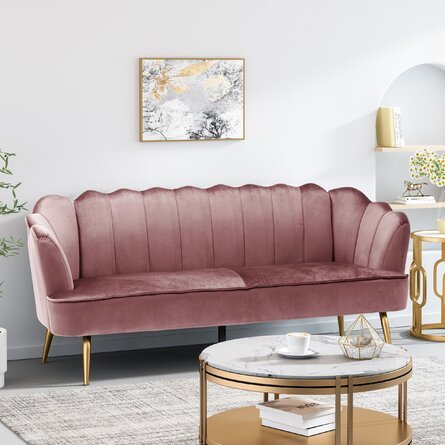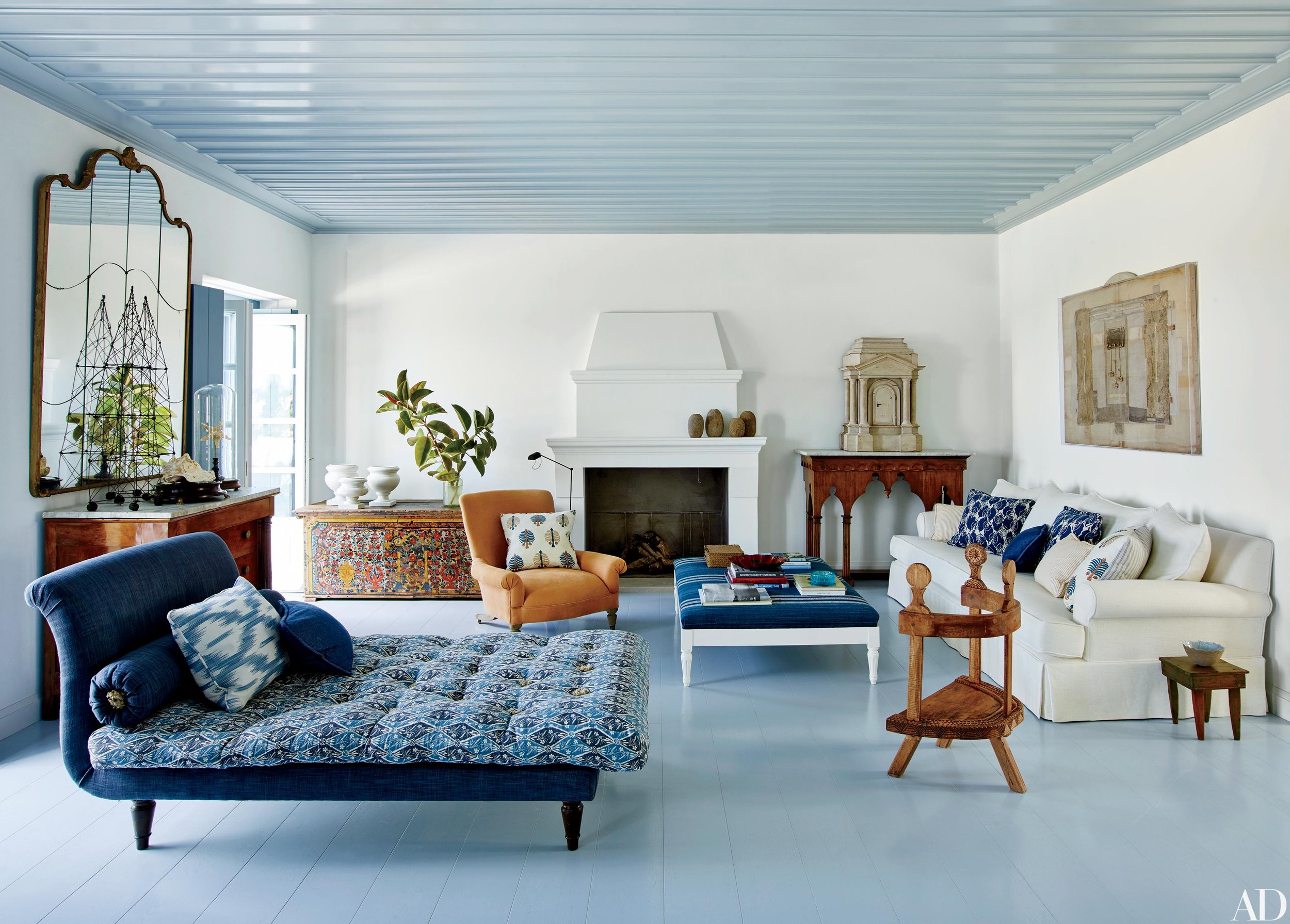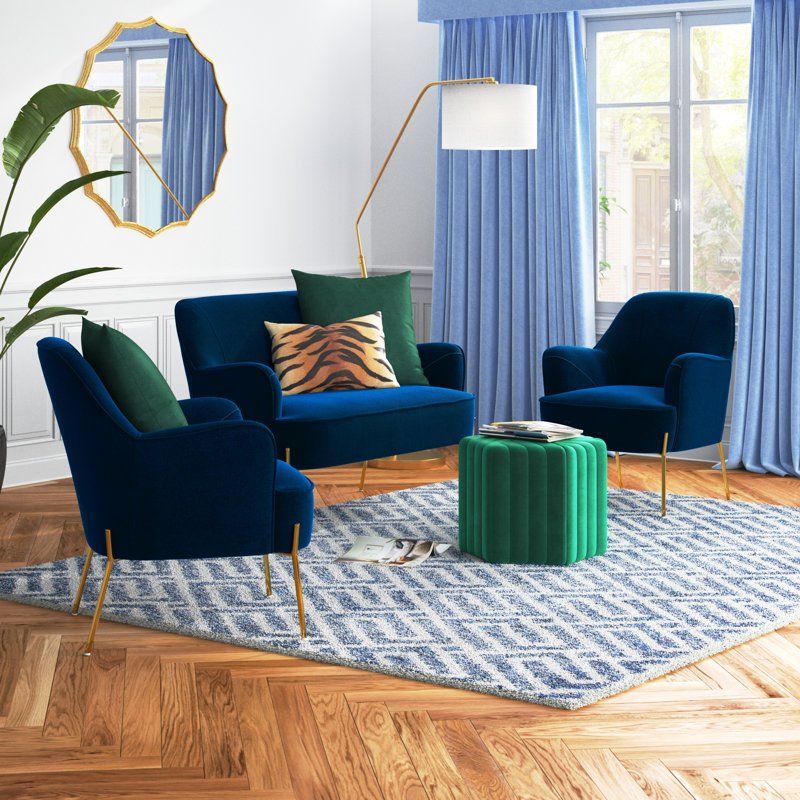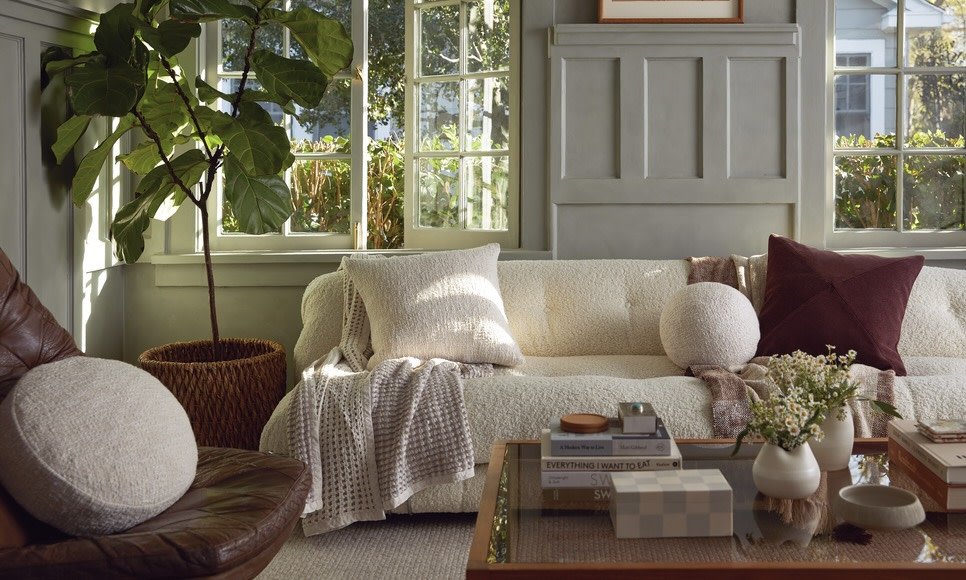10 tips from an interior designer
Introduction
Designing a space is an art. It's like creating a work of art that you get to live with every day. And just like painting or sculpting, it's not always easy to know where to start or what your next move should be. That's why I have my go-to tips for anyone who needs some help decorating.
Design your space around a statement piece.
The key to creating a beautiful space is to focus on a few key pieces. The rest of your room should be used as a backdrop for these focal points, so think about where you want them placed and try to create an arrangement that allows for that.
Without a focal point, a room can feel chaotic and disjointed. It can be difficult for the eye to know where to rest, which can lead to a sense of unease or discomfort.
A focal point doesn't have to be an extravagant feature - it can be as simple as a piece of artwork, a unique light fixture, or a statement piece of furniture. The key is to choose something that will make an impact and tie the design together.
Having a focal point can also help to establish the overall mood or theme of the room. For example, a bold and colorful piece of art can set the tone for a lively and energetic space, while a cozy fireplace can create a warm and inviting atmosphere.
Ultimately, a well-designed focal point can be the difference between a room that feels uninspired and one that feels truly special. It's an essential element of any good interior design, and one that should be carefully considered in the planning stages of any project.
For example: if you have a large sofa with an armchair on each side, make sure those chairs are large enough to accommodate someone sitting comfortably in them. Then fill in any gaps with smaller accent chairs or ottomans that can act as footrests when needed (and just look good).
Ex: Living Room
Creating a focal point in a living room with a large sofa can be challenging, but it is definitely possible. Here are a few tips to help you achieve this:
Consider using a large piece of artwork or a statement wall hanging above the sofa. This will help draw the eye upwards and create a sense of visual interest in the space.
Use a bold and colorful rug to anchor the space and create a focal point around the sofa. A rug with a vibrant pattern or texture can help to balance the weight of the sofa and add interest to the room.
Incorporate a unique coffee table or side table that complements the style of the sofa. This can be a great way to add interest and texture to the space, while also providing a practical function.
Use accent pillows and throws in complementary colors or patterns to draw the eye towards the sofa. This can be a great way to tie the design together and create a cohesive look in the room.
Finally, consider adding a statement light fixture or floor lamp near the sofa. This can help to create a warm and inviting ambiance in the room, while also adding a touch of visual interest and style to the space.
3.Paint your ceiling!
If you have a ceiling and it's not painted, stop what you're doing right now and go paint it. So often we forget about the 5th wall. Its usually the largest surface area in a room besides the floor. Seriously. Don't even finish reading this article until you've gone down to the hardware store and bought yourself a roller brush and some paint--and then come back here when you're ready for some good advice on how best to proceed with your new project.
One of the best ways to make a room feel larger is by painting your ceiling white or another light color (like gray). This will give an illusion that there's more space than there actually is, which can be especially impactful if your walls are already have great artwork or wallpaper.
Adds visual interest by drawing the eye upward and adding height and depth depending on the color.
It can make a room feel larger, and can help to create a more immersive and inviting atmosphere.
A light-colored ceiling can help to reflect light and brighten up a room. This can be especially beneficial in rooms with limited natural light or in basements.
If you don't want to use actual paint on your walls, consider using spray-on insulation instead: It'll still give off an airy vibe while also helping keep heat inside during winter months when temperatures drop below freezing outside."
3. Go bold with your color choice.
The past year or so there has been a trend with a lot of grays and whites. The versatility of these neutrals can be great but also a little blah.When it comes to interior design, color is the name of the game. There are no rules when it comes to decorating your space--your home should be a reflection of who you are and what makes you happy. But there's one thing that can help make sure that your decorating style doesn't clash with itself: choosing the right colors for each room.
Consider the color you want and where it is going. Bright yellows and reds are too energetic for bedrooms but great in living rooms or dining rooms. Choose a color that isn't too bright (like neon yellow).
The same is true for deep tones.
Balance with light: Using dark paint in a room can create a cozy, dramatic atmosphere, but it's essential to balance it with light. For example, pairing dark walls with plenty of natural light or adding light-colored furniture and decor can create a visually appealing contrast and prevent the room from feeling too gloomy.
Accentuate key features: Using dark paint can also be a great way to accentuate key features in a room, such as an exposed brick wall or a fireplace. By painting the surrounding walls a dark color, you can make these features stand out and create a focal point in the room.
Consider the room's purpose: When using dark paint, it's important to consider the room's purpose. For example, a dark-colored bedroom can be relaxing and create a cozy, intimate atmosphere, while a dark-colored kitchen may not be as practical, as it can make the space feel smaller and less inviting. So, it's crucial to consider the room's purpose and how a dark color scheme can enhance or detract from its functionality.
Choose a color that isn't too neutral (like white). Neutrals are ok, but make sure to get the right one. For example: There are thousands of varying shades of white so it is important to get the one with the correct undertone that works with your decor.
And don't forget about layering! If you're going bold with one piece of furniture or artwork, like this gold couch from West Elm above, try pairing it with softer neutrals, interesting patterns, and accessories elsewhere in the room so everything doesn't feel overwhelming together visually speaking.
4. Don't be afraid to mix modern and traditional pieces.
You don't have to be a designer to know that mixing old and new can be a great way to bring personality to a room. Often when you are only working in one design style your home can look like a furniture catalog and not in a good way. Most of us are a blend of various styles. It's also an easy way to add some cohesion, if you're working with multiple different styles (for example, if you have several pieces of mid-century furniture in your home).
Traditional furniture can be mixed with modern furniture, and vice versa--so don't be afraid of mixing up styles!
It's what makes you and your home unique and reflects your own personal style. Find common ground: When blending interior design styles, start by identifying common ground between the different styles. Look for elements that complement each other, such as similar color palettes, textures, or materials. By finding a common thread, you can create a cohesive and balanced look.
Focus on key pieces: Another effective way to blend interior design styles is to focus on key pieces of furniture or decor that represent each style. By incorporating these items strategically, you can create a layered and nuanced look that incorporates multiple styles without feeling overwhelming.
Experiment with scale: Experimenting with scale is another great way to blend interior design styles. For example, pairing a large, modern sofa with a vintage rug can create an interesting contrast and balance. Similarly, combining oversized artwork with smaller, more delicate pieces can create a dynamic and visually appealing composition. By playing with scale, you can create a unique and personalized look that blends different design styles seamlessly.
But there are some things that should never go together: For example, I would say that mixing an overstuffed leather chair with sleek velvet couches is not going to work. . However, as long as you stick within these simple principles
5. Allow for a little mess in your home.
We all know that a clean, tidy home is a happy home. But it's also important to remember that messes are part of life--and they can be good things! Small messes can inspire creativity and happiness as well as provide a source of comfort.
If you have young children or pets, there's no way around some amount of clutter in your house. But even if you don't have either one , there will still be moments when things get messy--you drop something on the floor; someone spills their drink at dinner; your toddler decides he needs finger paints right now. Instead of fighting against these inevitable moments, embrace them! Allow yourself permission to live with some clutter so long as it doesn't interfere with daily living tasks like cooking or cleaning up after meals. A good home is a home that is well lived in.
When I moved into my house, I was determined not only to keep everything organized but also totally spotless all the time (which sounds exhausting and is impossible unless you have a cleaning staff). It wasn't until recently that I realized how much better off my family was when our space wasn't constantly being tidied up just so we could function properly throughout our day-to-day lives together! You just have to have a plan on how to manage clutter.
6. Get creative with storage.
If you're looking to get creative with storage, here are some ideas:
Use baskets, boxes and bins to store things. You can buy them at any store that sells home goods--or just make them yourself! If you have the time and patience (and skill), try making your own containers out of fabric or leather.
Hang a shoe rack on the wall. This will help keep your shoes organized while also freeing up floor space in your closet or entryway area by not having them on display as much anymore.
Use magazine holders as shelves for small items like jewelry or makeup brushes/tools; they tend to be more sturdy than plastic cups filled with water so they won't tip over if someone bumps into them accidentally!
7. Fill your walls with art and photography you love.
If you're looking for a way to make your space feel more inviting and cozy, art is the perfect solution. It can be as simple as hanging a single piece of artwork on the wall or filling an entire gallery with photos of your family and friends. Either way, it's important that you choose pieces that reflect who you are--and what kind of vibe you want to give off.
If you want to use art as a conversation starter, try buying something bold and colorful like this abstract painting by artist Rolfe Judd (the same one featured above). If this doesn't get people talking about how cool your apartment is then nothing will!
On the other hand if all people do when they come over is talk about themselves then maybe it would be better if instead of hanging up any old thing like say...a painting...that instead acted as inspiration during those long hours spent working alone in front of computer screens (which is also known as being an interior designer).
8. Keep clutter out of sight.
The best way to keep clutter out of sight is by using baskets and containers. Baskets are great for storing toys or magazines, while bins can be used for shoes and scarves.
Here are some my go to tips:
Use storage boxes and baskets: Place items that are cluttering your space into storage boxes and baskets. This can be anything from toys to paperwork. Then, simply place the boxes and baskets in a closet, under a bed, or on a shelf.
Utilize furniture with built-in storage: Furniture with built-in storage is a great way to hide clutter in your home. For example, you could use an ottoman that doubles as a storage container or a coffee table with drawers.
Install shelves and cabinets: Shelves and cabinets are a great way to hide clutter and make your home look more organized. Install them in areas where clutter tends to accumulate, such as in your home office, living room, or bedroom.
Create designated storage areas: Designate specific areas in your home for certain items. For example, you could create a coat rack by the front door for jackets and bags, or a mail holder near the entrance for letters and bills
And finally: if all else fails and there's just no way around having stuff lying around everywhere, try putting it on display with something decorative like this cool basket from Restoration Hardware
9. Choose furniture that fits you, not the other way around.
Choose furniture that fits you!
If you're tall and skinny, don't buy a couch that's too small to accommodate both your body type and your personality.
Don't choose furniture for its popularity or trendiness--choose it because it suits your style and makes sense in your space.
10. Think about lighting when designing your living room space.
Lighting is important in every room, but it's especially important in the living room. You want to make sure your guests feel comfortable and welcome when they enter your home.
To create a mood with lighting:
Lighting can play a crucial role in creating a balanced and harmonious atmosphere in a room. Here are some tips for using lighting to achieve balance:
Layer your lighting: Use a combination of overhead, task, and accent lighting to create depth and balance in the room. Overhead lighting provides general illumination, task lighting helps you perform specific tasks like reading or working, and accent lighting highlights focal points like artwork or architectural features.
Choose the right bulbs: Different bulbs emit different types of light, which can affect the mood of a room. Warm-toned bulbs create a cozy, inviting atmosphere, while cool-toned bulbs provide a more energizing and focused feel. Experiment with different bulbs to find the right combination for your room.
Consider natural light: If your room has windows, take advantage of natural light during the day. Position your furniture to take advantage of natural light and consider using sheer or light-colored curtains to let in as much light as possible.
Use dimmers: Dimmer switches allow you to adjust the intensity of your lighting, creating a more flexible and adaptable space. You can also use dimmers to create different moods throughout the day or for different activities.
Balance your lighting: Make sure your lighting is evenly distributed throughout the room. If you have a particularly dark corner or area, consider adding an extra lamp or light to balance the space.
By combining these tips, you can create a balanced and harmonious atmosphere in your room using lighting.
11. When decorating, don’t forget to edit. Sometimes less is more.
The first rule of interior design is: Less is more. It's all about balance,A well-edited space can also make a small room feel larger and more spacious. By removing excess furniture or decorative items, you allow the eye to focus on the key elements of the space, which can make it feel more open and airy.
Finally, editing your space can also help you to create a more cohesive and intentional design. By removing items that don't fit with your overall aesthetic or color scheme, you can create a more harmonious and visually pleasing environment that feels intentional and well-curated.
For example: Accessories are wonderful and add so much personality to a space but if you have so much stuff on yoru surfaces it can be overwhelming and look cluttered. You want you home to feel like a home, not the shelves of HomeGoods.
Conclusion
I hope these tips have been helpful. There are so many ways to bring your personality and style into your home, but the most important thing is that you do it! If you're feeling overwhelmed by the thought of decorating, don't worry--you can start small with a couple simple changes. There's no time like today to get started on creating your dream living space!











